Prehistory refers to the period of time before the advent of written records or documented history. It encompasses the vast span of time during which humans and their ancestors lived without leaving written accounts of their activities and events.
Prehistory is typically divided into several distinct periods based on archaeological and anthropological evidence, and it covers the time from the emergence of the earliest hominids to the invention of writing.
Table of Contents
Prehistoric Periods
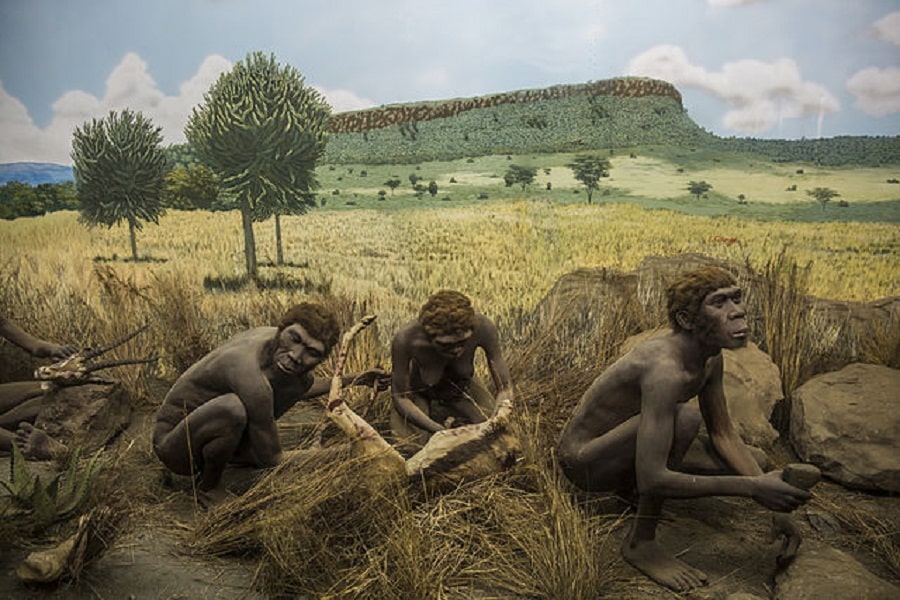
The journey through prehistory unfolds over more than two million years, a period rich in developments that shaped humanity. Even thus restricted, this vast first story of humanity covers a sizable span – the Stone Age covers over two million years – with little left behind to tell the tale. But decades of excavation, analysis, and debate have managed to reconstruct most of the many small but vital steps that led our ancestors from their primitive beginnings to the first written words, starting with the most important first step of human evolution – tool use.
The Stone Age
The Stone Age encompasses the entire period of early human history before the advent of metal use, spanning over two million years. It is traditionally divided into three distinct periods: Lower, Middle, and Upper Paleolithic, each marked by significant advancements in human tool use and lifestyle.
That extends, obviously, much farther back than Homo sapiens – who first appeared only about 300,000 years ago – or even our close cousins Homo neanderthalensis. Even Homo erectus, the grandfather species of modern humans and the first hominid to display roughly modern human proportions, only goes back about one and a half million years.
Rather, the species thought to have rung in the Paleolithic era was Homo habilis – one of the earliest species in the genus Homo. Its name means “handy man,” and it was believed to be the hominid who started our official prehistory by being the first to use tools.
The Palaeolithic or ‘Old Stone’ Period

The Paleolithic Era, also known as the ‘Old Stone’ Age, derives its name from the earliest known stone tools crafted by our ancestors. This period marks a fundamental chapter in human history, characterized by the initial development of simple tools that laid the foundation for human progress. The discovery of these primitive tools, dating back to the Lower Paleolithic period, was a landmark achievement by the paleoanthropologist Louis Leakey in the 1960s. Unearthed in Tanzania’s Olduvai Gorge, these tools symbolize the inception of the Stone Age and the beginnings of human ingenuity and adaptation.
Dating back 1.5 to 2 million years, early human tools consisted of choppers, scrapers, and hammerstones, primarily made from river rocks like quartz and obsidian. Mary Leakey categorized these into distinct industries, with the oldest being the Oldowan tools from Tanzania’s Olduvai Gorge, indicating their wide use across Africa, Europe, and Asia. Even older tools, over three million years old, were discovered at Kenya’s Lomekwi 3 site, suggesting early tool use by Australopithecus.
Around 1.7 million years ago, the Acheulean industry introduced sophisticated hand axes with multiple uses. By 300,000 years ago, the emergence of Homo sapiens marked the transition to the Middle Paleolithic era, characterized by the Levallois technique for creating multiple tools from a single stone core, a method prevalent in the Neanderthals’ Mousterian industry.
Further advancements in the Upper Paleolithic, around 50,000 B.C.E., led to the creation of microliths – small, precise tools that enhanced hunting efficiency, marking a significant step towards modern human behavior. Despite these technological advancements, Paleolithic humans were primarily foragers and hunters, dependent on the natural environment for sustenance, with practices like agriculture still in the distant future.
READ MORE: The Ancient Weapons of Old Civilizations

Paleolithic humans gradually gained environmental control, notably through mastering fire, evidenced by 300,000 to 400,000-year-old controlled fire use in Israel’s Qesem Cave and possibly 1.4 million years ago in Kenya. A significant Upper Paleolithic development was the domestication of wolves into dogs around 30,000 years ago, signifying a profound human-animal bond.
Evidence of this includes over 30,000-year-old dog remains in Germany’s Hohle Fels cave and Belgium’s Goyet Caves, and a definitive 32,000-year-old canine burial in Predmosti, Czech Republic. This era also saw the rise of religious practices, exemplified by a 115,000-year-old Neanderthal burial in Northern Israel and a 15,000 years later Homo sapiens burial.
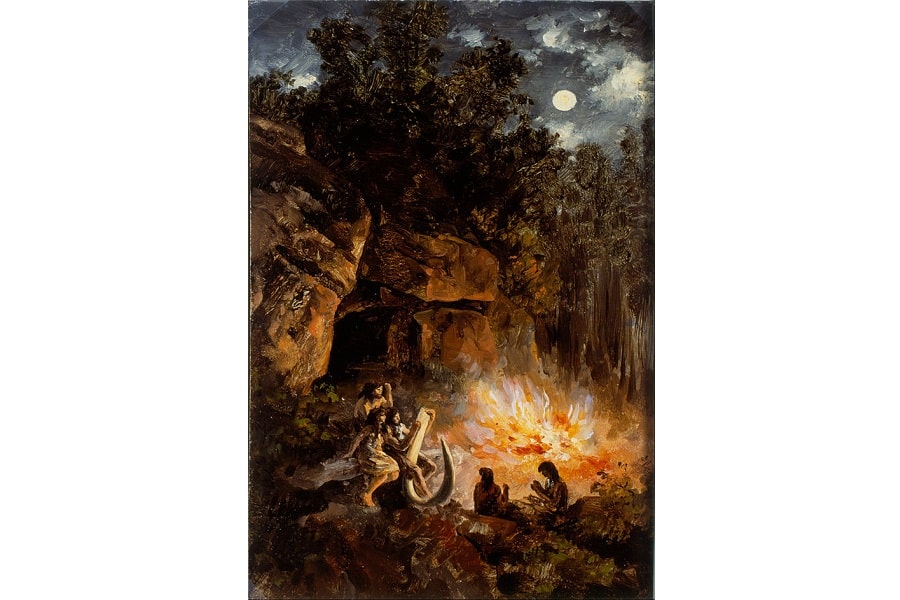
Cave paintings from the Upper Paleolithic, like those in Lascaux Cave, France, suggest ritualistic use, with some located in hard-to-reach areas, possibly for ceremonial purposes. Other art forms include the Venus of Tan-Tan, a half-million-year-old figurine found in Morocco, and 75,000-year-old etched hematite and shells from South Africa. Shell beads over 100,000 years old in Israel also point to early artistic expression.
Etched hematite pieces and shells dating back 75,000 years were found in South Africa, with shell beads from Israel potentially over 100,000 years old. Early humans lived in caves or trees, moving with animal migrations, seasonal changes, and fluctuating food sources. Homo erectus likely lived in small groups that possibly cooperated with others, forming larger collectives. The hunter-gatherer lifestyle, dictated by low food density and inconsistent sources, necessitated a nomadic existence.
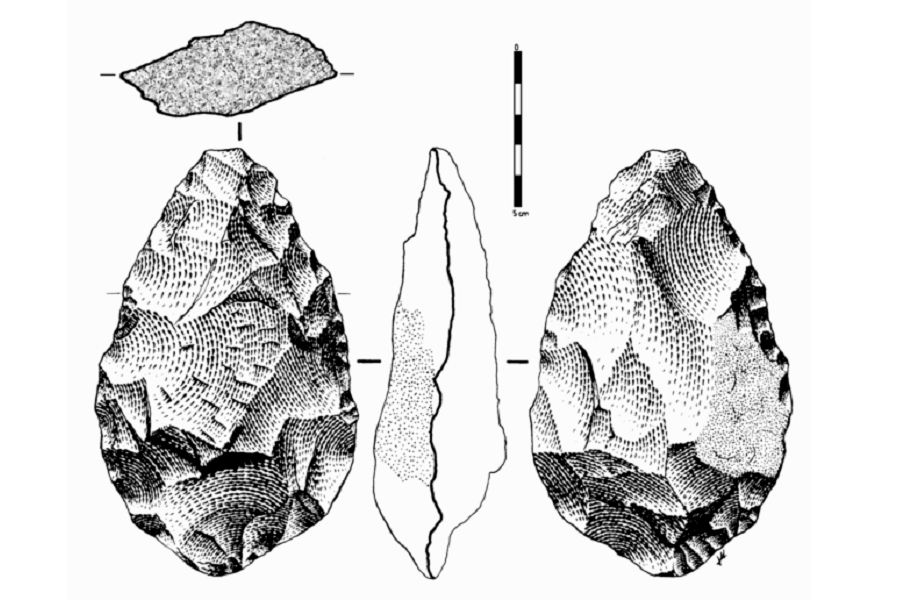
Early Paleolithic humans, including Homo erectus, led a nomadic lifestyle, moving in response to changing seasons and food sources. Living in small groups, they likely followed a cyclical migratory pattern, as suggested by their spread from Africa to Eurasia around two million years ago. Evidence of Homo erectus also includes the Meganthropus in Java, Indonesia, dated to 1.7 million years ago, and their presence in Western Europe around 1.2 million years ago, marking their widespread distribution across continents.
The Mesolithic or ‘Middle Stone’ Period
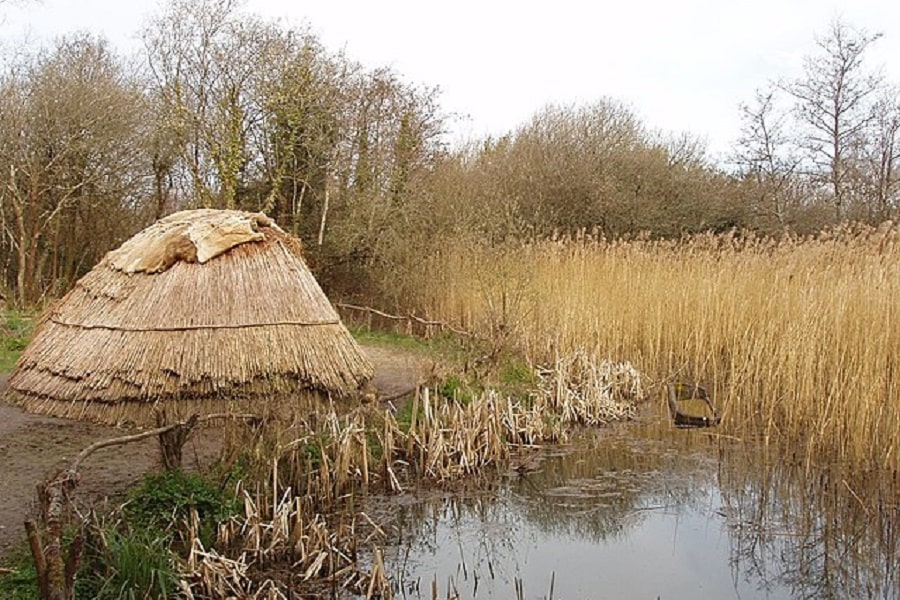
The transition from the Paleolithic Age to the Mesolithic, or Middle Stone Age, is flexible. In Europe, it occurred around 15000 years ago, while around the Eastern Mediterranean and the Fertile Crescent, it came some 5000 years earlier.
READ MORE: The Cradle of Civilization: Mesopotamia and the First Civilizations
In Africa, the Mesolithic era’s onset varies from 24,000 years ago in modern-day Morocco to about 8,200 years ago in East Africa. In India, it spans between 12,000 and 8,000 years ago, and 10,000 to 16,000 years ago in the Far East. This era, linking the Paleolithic and Neolithic periods, saw significant hunter-gatherer societal developments, including advanced toolmaking. Known as the Epipalaeolithic in the Near East, the Mesolithic era is marked by a transition from crude Paleolithic laminar microliths to more efficient, geometric microliths, yielding smaller, less wasteful, and finely crafted tools.

The period also saw the emergence of early ceramics, with the earliest pottery dating back up to 9000 years in regions ranging from North Africa to Siberia. This development, predating agriculture, is still categorized as part of the Mesolithic despite its occasional appearance in earlier periods, as evidenced by a potentially 20,000-year-old ceramic bowl from China’s Xianrendong Cave.
During the Mesolithic, human societies became less nomadic, thanks to improved hunting and fishing techniques and the abundance of food sources following the Ice Age. While still primarily hunter-gatherers, people began to utilize multiple familiar sites for living, suggesting a more settled lifestyle. This is illustrated by the Star Carr site in England, showing long-term, cyclical habitation and the earliest known carpentry work in the region.
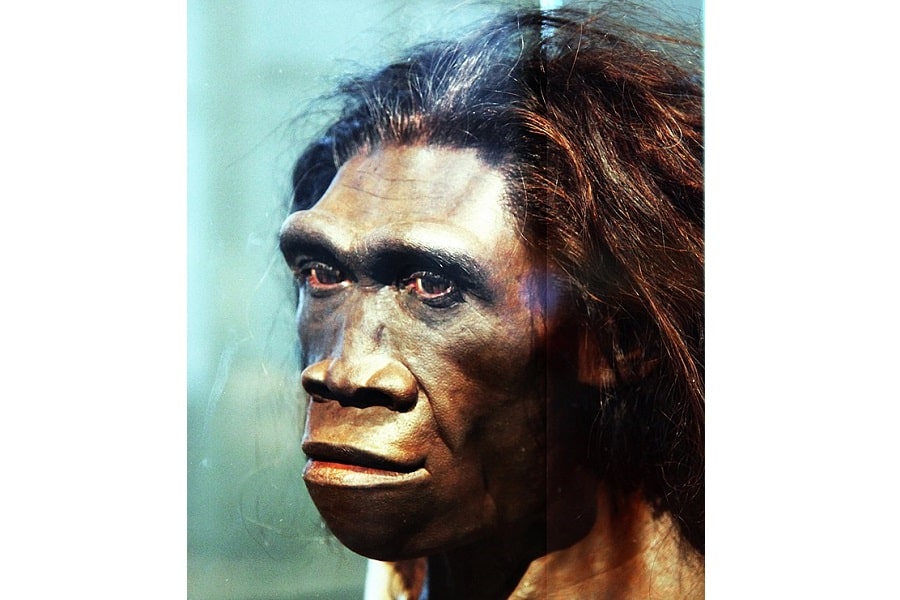
READ MORE: After the Ice: A Global Human History, 20000–5000 BC
Also, religious, artistic, and technological thought continued to expand in this era. Some 9000 years ago on the future site of Stonehenge – millennia before the great stone blocks were placed – Mesolithic humans had arranged rows of posts in what seems to be an astronomical alignment, and an apparent lunar calendar at Warren Field in Scotland dates from about the same time.
READ MORE: 7 Wonders of the Ancient World
The Neolithic or ‘New Stone’ Period
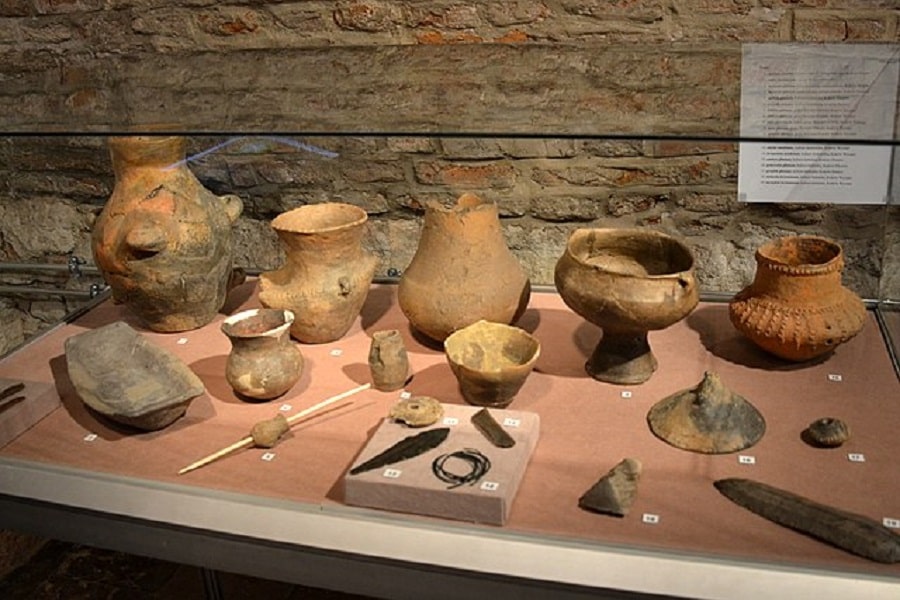
The start of the Neolithic, or New Stone Age, is denoted by a significant change in how humanity lived. Finally leaving behind the nomadic hunter-gatherer existence of earlier eras, humans began to raise their own food with the introduction of agriculture.
Around 10,000 B.C.E., the Neolithic era began in the Fertile Crescent with the cultivation of founder crops like flax, peas, barley, lentils, and einkorn and emmer wheat. This period saw the domestication of goats, sheep, cattle, and pigs. Agriculture’s spread by 7000 B.C.E. reached Southeastern Europe, India, Pakistan, Azerbaijan, China, Southeast Asia, and later Northern Europe and the British Isles. Simultaneously, indigenous cultures in the Western Hemisphere, starting around 9000 B.C.E. in Colombia and Ecuador, cultivated crops like squash, potatoes, and tomatoes.
This era also witnessed the evolution of Neolithic toolmaking from flaked to polished stone tools, introducing the adze for woodworking. Clothing became more sophisticated with the use of flax and wool. Notable megalithic structures like Stonehenge and Göbekli Tepe emerged, serving purposes from tombs to astronomical calendars and religious sites.
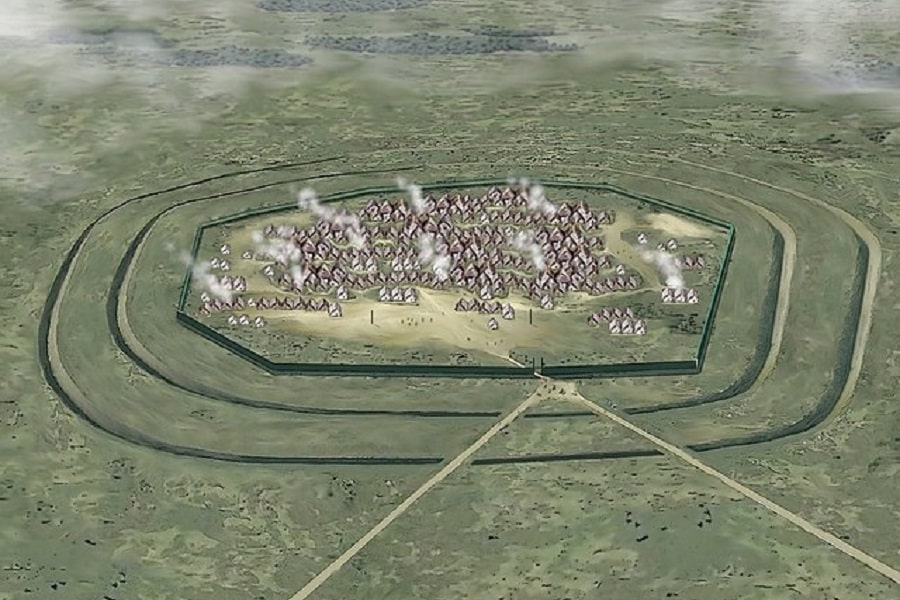
In a settled society, art and decoration become more common. A collection of pottery, sculpture (such as the acclaimed Thinker of Cernavoda, from 5000 B.C.E. in Romania), carvings, and murals from the Neolithic all demonstrate the increasing artistic demand (and sophistication) found in the New Stone Age.
The Bronze Age
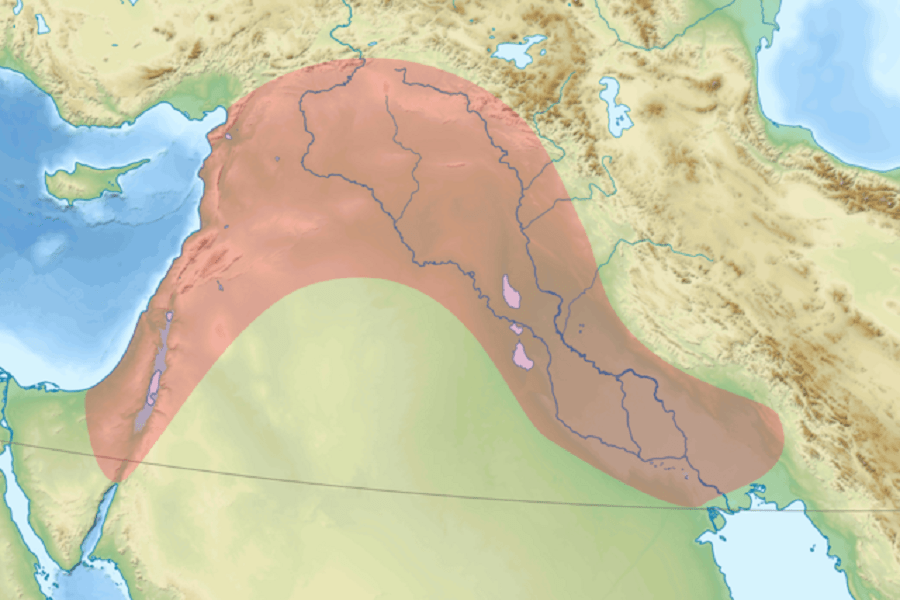
The over two-million-year span of the Stone Age finally ended in the Fertile Crescent about 4500 B.C.E., as humanity made a new breakthrough. In its place came the so-called Metal Ages, – Copper, Bronze, and Iron – and human prehistory would continue through the first of these, the Chalcolithic, or Copper Age.
READ MORE: How Long Have Humans Existed?
The Chalcolithic, or Eneolithic era, was a transitional phase between the widespread use of copper tools and the development of bronze alloys, initially grouped with the Bronze Age until its distinction emerged in the 19th century. Copper use, unlike the Neolithic Revolution, appeared simultaneously across Europe and Western Asia, with copper mining and smelting predating the Chalcolithic by over a thousand years, notably near the Gulf of Aqaba. Copper tools, like a 5500 B.C.E. axe from Serbia’s Pločnik site, indicate early use before the Neolithic’s end.
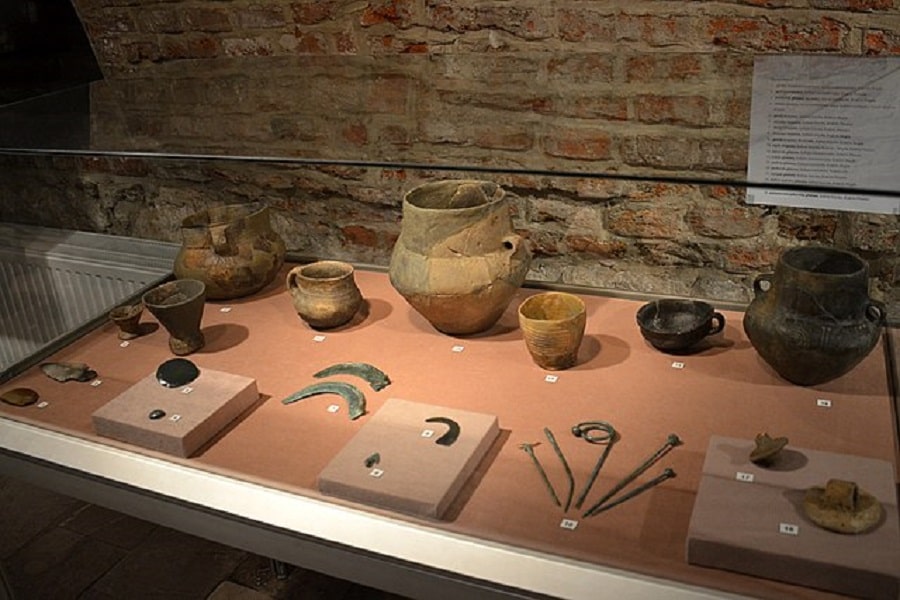
Around 4500 B.C.E., in the Fertile Crescent, there was a marked decline in stone tool quality, signaling a shift to copper for its durability and sharpness. Nonetheless, stone tools persisted, evidenced by the Chalcolithic Ötzi the Iceman, who possessed both copper and stone tools. This period also saw the evolution of Neolithic settlements into the first large, centralized societies, marking the formation of the earliest states.
During the Chalcolithic period, copper tools emerged as an improvement over stone, but the era’s most significant advancement was the formation of large, centralized societies, the earliest states. This began with Uruk in Mesopotamia around 4000 B.C.E. and Hierakonpolis in ancient Egypt around 3500 B.C.E., with Uruk growing to over 40,000 people and engaging in long-distance trade.
The Copper Age led to the Bronze Age after about a thousand years, marked by the emergence of writing around 3400 B.C.E. with Sumer’s cuneiform and Egypt’s glyphs, ending prehistory. Copper had been used since 5500 B.C.E., but despite its dominance, stone tools persisted, as evidenced by Ötzi the Iceman’s mixed toolkit, into the Iron Age.
These ancient civilizations now had their greatest tool – writing systems allowing them to record their laws, and the deeds of their rulers and people, and to pass their knowledge in a more durable and reliable form than oral transmission. And with this advance, the long era of human prehistory came to a close, and the era of history began.
The Iron Age
The Iron Age marks a significant phase in human history, following the Bronze Age, and is characterized by the widespread use of iron for tools and weapons. This era began at different times across various parts of the world, generally around 1200 B.C.E. in the Eastern Mediterranean and slightly later in other regions. The use of iron revolutionized many aspects of daily life and warfare due to its relative abundance and superior strength compared to bronze.
Iron smelting, the process of extracting iron from its ores, required high temperatures and a more advanced understanding of metallurgy. The Hittites, an ancient Anatolian people, are often credited with the earliest production of iron artifacts, but the technology spread rapidly across the world, leading to significant cultural and technological changes.
In the Iron Age, societies saw a shift towards more complex political structures, with the rise of powerful kingdoms and empires. The increase in agricultural productivity, thanks to iron plows and tools, supported larger populations and the growth of ancient cities. This period also witnessed the development of new forms of art, architecture, and religious practices.
Prehistoric Humans

Prehistoric humans, spanning from the earliest hominids to the dawn of written history, represent a vast and diverse chapter in human evolution. This period includes several species within the genus Homo, such as Homo habilis, Homo erectus, and Homo sapiens.
Homo habilis, known as the “handy man,” is credited with the creation of the earliest stone tools, marking the beginning of the Paleolithic era. Homo erectus followed, showing significant advancements in tool-making and being the first to use fire and possibly language. These early humans were hunter-gatherers, living in small groups and moving with the seasons to follow food sources.
Homo sapiens, our direct ancestors, appeared around 300,000 years ago. They demonstrated advanced tool-making skills, engaged in hunting and gathering, and began to exhibit evidence of symbolic thought and artistic expression. This period saw the development of more complex social structures and the beginnings of religious and spiritual practices.
Prehistoric Art
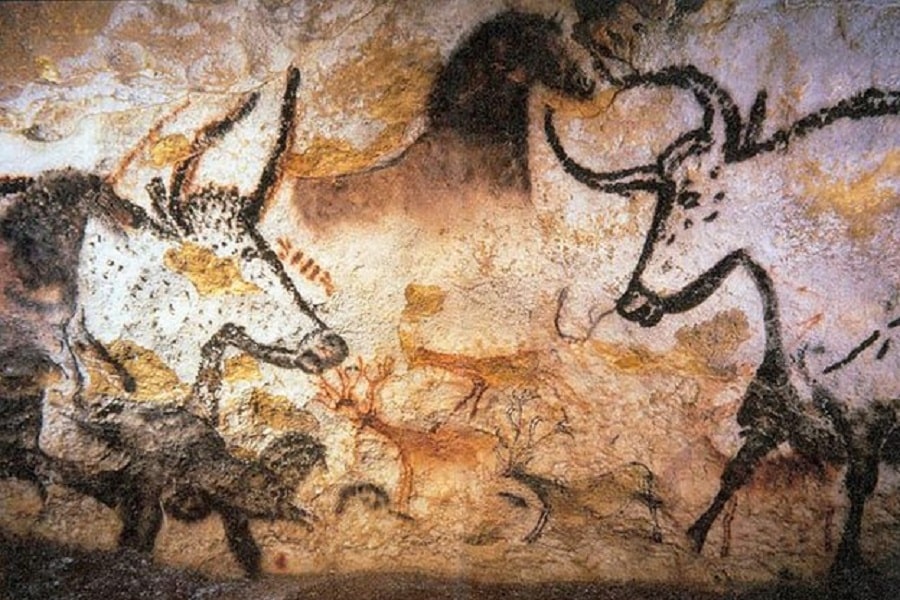
Prehistoric art encompasses a wide range of creative expressions from the earliest human history until the advent of written records. This art includes cave paintings, carvings, sculptures, and decorative objects made from various materials like stone, bone, and ivory.
Cave paintings, such as those found in Lascaux, France, and Altamira, Spain, are some of the most famous examples of prehistoric art. These paintings often depict animals and human figures and are believed to have had ritualistic or religious significance.
Sculptures, such as the Venus figurines, represent another important aspect of prehistoric art. These figurines, often depicting female forms, are found across Europe and may have had symbolic or fertility-related purposes.
Prehistoric art is not just limited to visual forms; it also includes music and dance, though there is little direct evidence for these art forms. The discovery of flutes made from animal bones suggests that music played a role in prehistoric cultures.
The End of Prehistory
Prehistory, the period of human history before the advent of writing, came to an end with the development of written records. The transition from prehistory to history is not uniform across the world, as different civilizations developed writing at different times.
The earliest known writing systems emerged in the Near East, particularly in Sumer (modern-day Iraq) and ancient Egypt, around 3400 B.C.E. and 3200 B.C.E., respectively. The invention of cuneiform in Sumer and hieroglyphics in Egypt marked a fundamental shift, as it allowed for the recording of events, laws, and customs, thus preserving knowledge more accurately and enduringly than oral traditions.
The transition from prehistory to history is significant as it marks the point at which humans could begin to document and shape their own narratives. This development also coincided with the rise of early civilizations and the establishment of more complex societal structures.
From Stone Tools to Written Tales: The Birth of Civilization
Tracing humanity’s evolution from the Stone Age to the Iron Age reveals a tale of relentless progress and innovation. Early humans evolved from crafting primitive tools to developing sophisticated iron implements, marking a path of remarkable resilience. The advent of writing transformed this journey, turning survival stories into recorded history and shaping scattered tribes into organized societies. This transition from stone tools to written words signifies the true dawn of civilization.